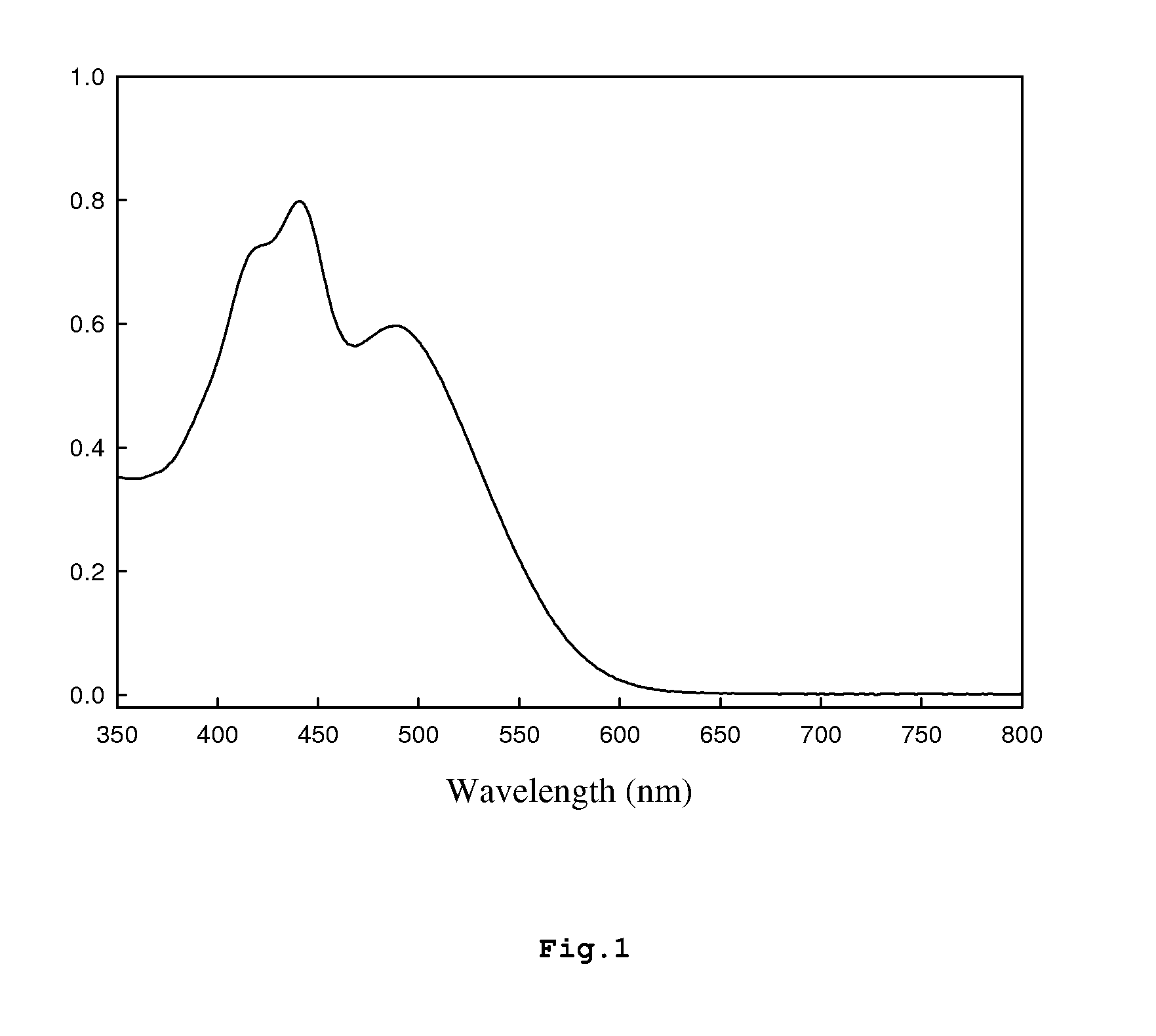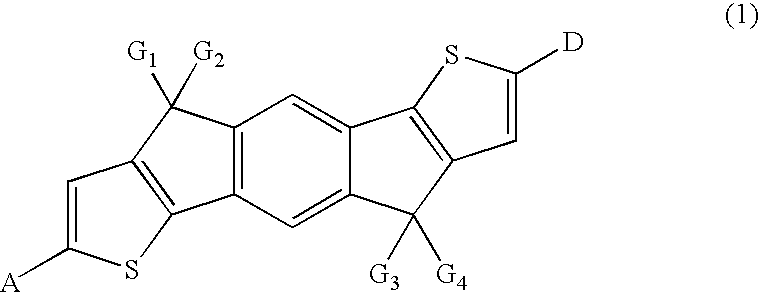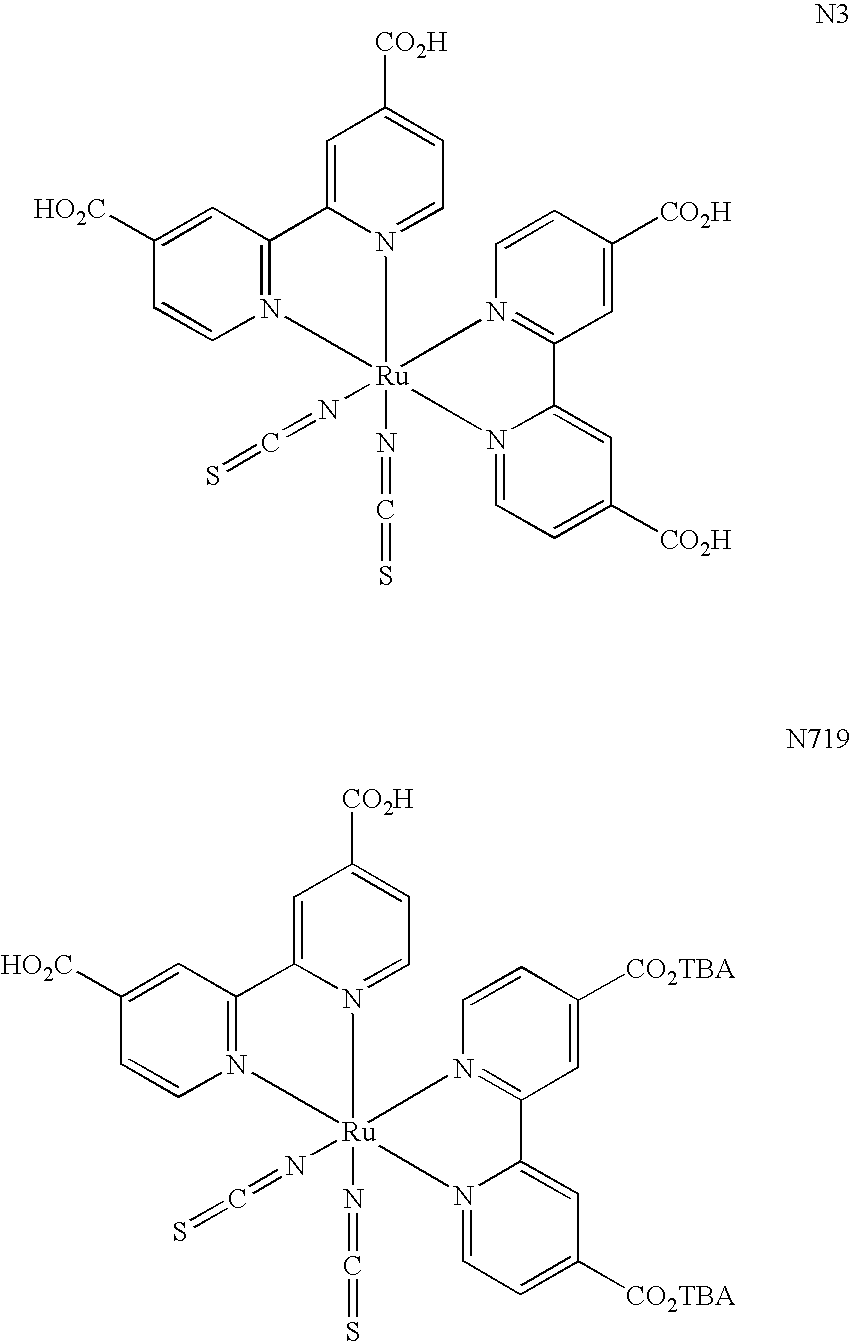Diindenothiophene derivatives and use thereof
- Summary
- Abstract
- Description
- Claims
- Application Information
AI Technical Summary
Benefits of technology
Problems solved by technology
Method used
Image
Examples
Embodiment Construction
[0013]The diindenothiophene derivatives according to the present invention have a structure of the following formula (1):
wherein, G1, G2, G3 and G4 are each independently an unsubstituted or substituted C6-C40-aromatic group or C1-C40-aliphatic group; A is an electron-withdrawing group; and D is an electron-donating group.
[0014]According to the present invention, the preferred G1, G2, G3 and G4 are each independently an unsubstituted or substituted C6-C20-aromatic group. More preferably, G1, G2, G3 and G4 are each independently a radical selected from the group consisting of the following formula (3), formula (4), formula (5) and formula (6).
wherein, R1, R2, R3 and R4 are each independently a hydrogen atom, a C1-C8-alkyl, or a C1-C8-alkoxy; and B is CH2, NH, S, Si or O.
[0015]According to the present invention, the electron-withdrawing group A is selected from the group consisting of
[0016]According to the present invention, the electron-donating group D is selected from —N(S1)(S2) or...
PUM
 Login to View More
Login to View More Abstract
Description
Claims
Application Information
 Login to View More
Login to View More - R&D
- Intellectual Property
- Life Sciences
- Materials
- Tech Scout
- Unparalleled Data Quality
- Higher Quality Content
- 60% Fewer Hallucinations
Browse by: Latest US Patents, China's latest patents, Technical Efficacy Thesaurus, Application Domain, Technology Topic, Popular Technical Reports.
© 2025 PatSnap. All rights reserved.Legal|Privacy policy|Modern Slavery Act Transparency Statement|Sitemap|About US| Contact US: help@patsnap.com



